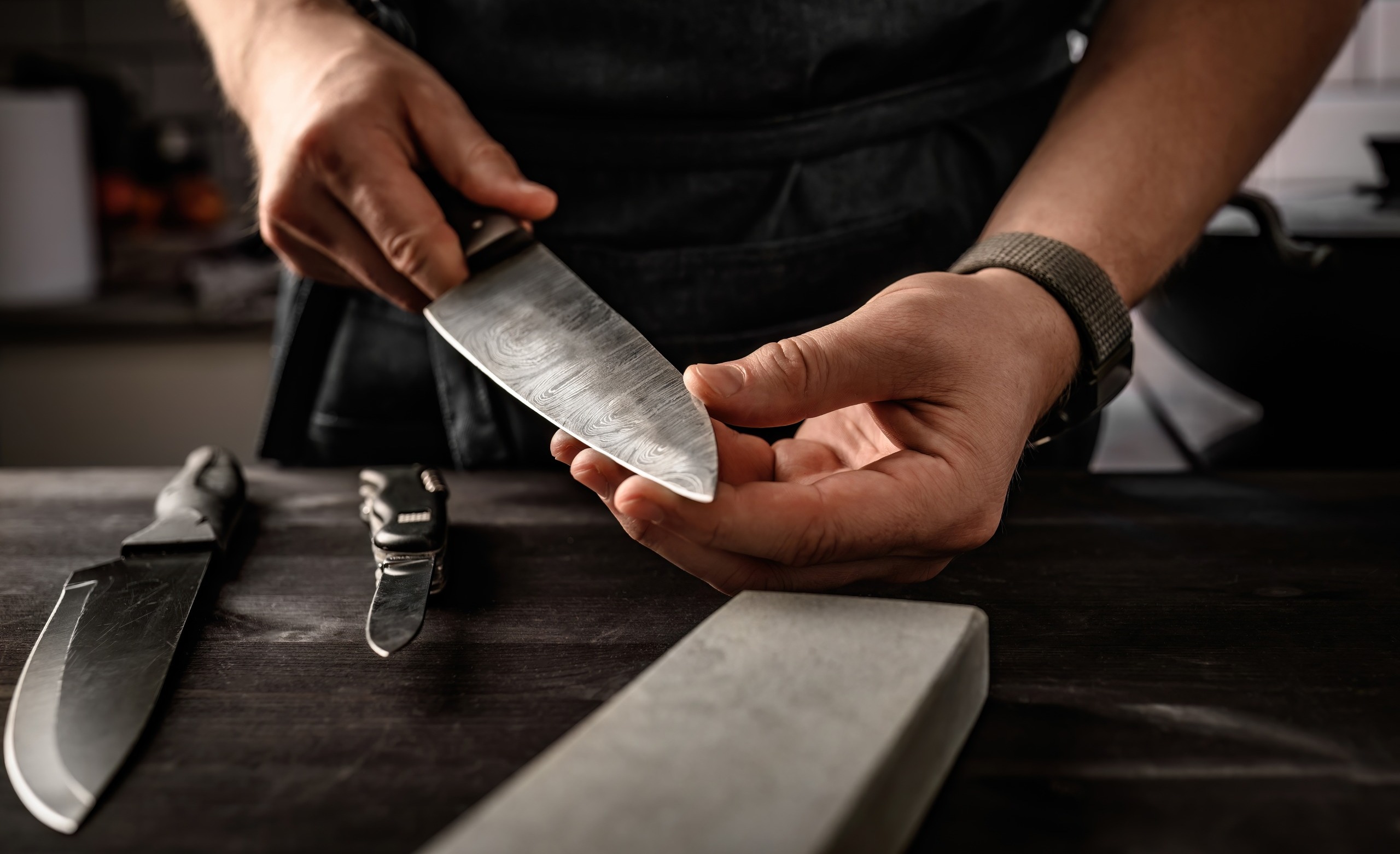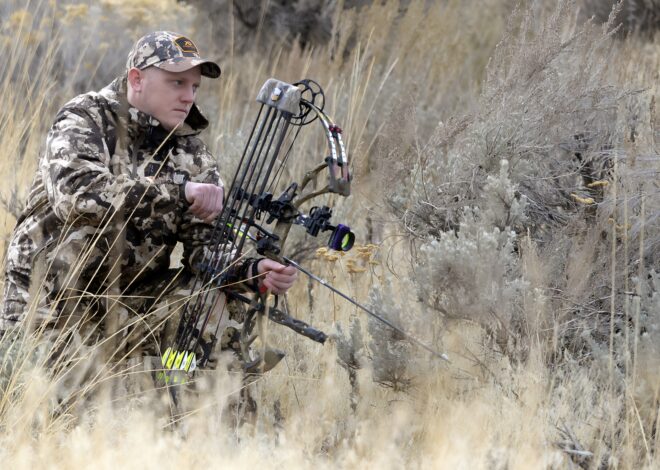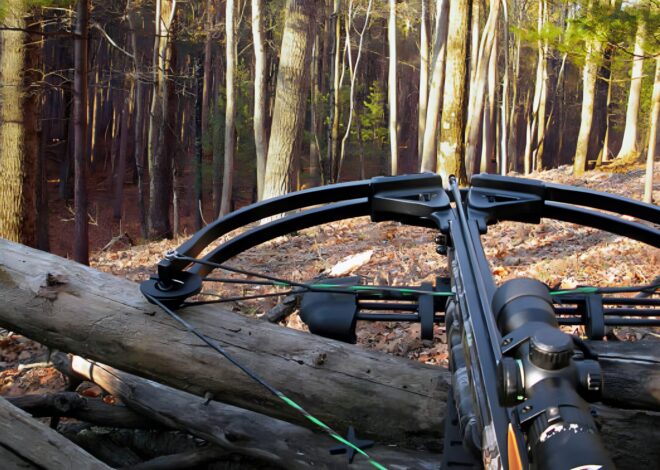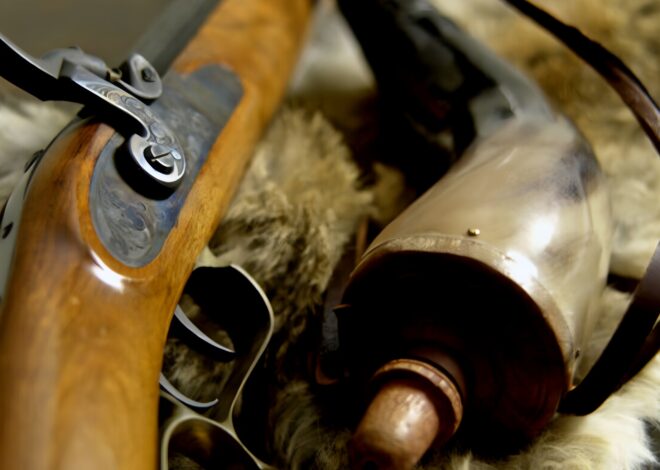
How To Sharpen A Hunting Knife
Welcome to our step-by-step guide on how to sharpen a hunting knife. When it comes to hunting, every detail matters. From your gear to your skills, being prepared can make or break your experience in the wild. One of the most crucial tools at your disposal is your hunting knife.
A sharp blade not only enhances efficiency but also ensures safety during field dressing and other tasks. Imagine trying to slice through tough hides or meat with a dull edge—frustrating, isn’t it? If you want to keep your knife performing at its best, learning how to sharpen a hunting knife is essential.
In this guide, we’ll walk you through everything you need to know about maintaining that perfect edge on your blade. Whether you’re a seasoned hunter or just starting out, having a reliable sharpening technique will elevate your game. Let’s dive into the world of knife care and ensure you’re always ready for whatever nature throws at you!
Why Having a Sharp Hunting Knife is Important
A sharp hunting knife is more than just a tool; it’s an extension of the hunter. The difference between a successful hunt and a frustrating experience often hinges on your blade’s sharpness. With a sharp edge, you can make precise cuts that are crucial during field dressing.
This not only preserves the quality of the meat but also speeds up the process, allowing you to get back to enjoying your time outdoors. Dull knives require excessive force, increasing the risk of slips and accidents. A well-sharpened blade minimizes these dangers, making every cut smoother and safer.
Moreover, maintaining a sharp knife reflects respect for both your craft and nature itself. It showcases your commitment to efficiency while ensuring that you’re fully prepared for any situation in the wild. In essence, having a razor-sharp hunting knife empowers you during every phase of your adventure.
Materials Needed for Sharpening
To sharpen your hunting knife effectively, you need the right materials. First and foremost, a quality sharpening stone is essential. Look for one with dual grit options—coarse for reshaping the edge and fine for honing. Next on the list is a sturdy honing rod or steel.
This tool helps maintain that sharpness between major sharpenings by realigning the blade’s edge. Don’t forget about lubricant! A few drops of mineral oil can reduce friction during sharpening, leading to a smoother process and better results. A clean cloth or paper towel will come in handy too.
Wipe down your knife before and after sharpening to remove any debris or metal shavings left behind. Consider wearing safety gloves. Protecting your hands while handling sharp tools ensures a safer experience overall as you focus on perfecting that blade’s edge.
Step by Step Guide to Sharpening Your Hunting Knife
Knowing how to sharpen your hunting knife is essential for optimal performance in the field. So let’s get started!
Step 1: Cleaning the Knife
Before diving into sharpening, it’s crucial to clean your hunting knife. A dirty blade can hide nicks or damage that need attention.
Start by rinsing the knife under warm water. This helps remove any dirt, blood, or grime accumulated during your last adventure. A soft sponge is ideal for this task; avoid abrasive materials that could scratch the surface.
For tougher spots, consider using mild soap or a specialized cleaner. After scrubbing gently, rinse thoroughly to ensure no residue remains.
Dry the knife completely with a clean cloth. Moisture can lead to rust and deterioration over time, defeating the purpose of maintaining an effective tool.
Taking these few minutes to clean your knife sets you up for success in sharpening and prolongs its life on future hunts. Your efforts now will pay off later when you rely on a sharp edge in the field.
Step 2: Choosing the right Sharpening Tool
Choosing the right sharpening tool is crucial for maintaining your hunting knife’s edge. There are several options available, each with its own advantages.
Whetstones are popular among enthusiasts. They offer versatility and can sharpen a variety of blade types. Look for one with dual grits—coarse for reshaping and fine for honing.
If you prefer convenience, a pull-through sharpener might be ideal. These tools are user-friendly and quick, making them suitable for those who want instant results without much technique involved.
For outdoor scenarios, consider using a ceramic rod or diamond file. Both are compact and easily portable, ensuring you can keep your knife sharp while in the field.
Take into account your comfort level with these tools. The best choice often depends on personal preference, as well as how frequently you plan to sharpen your knife.
Step 3: Understanding Different Angles and Techniques
When sharpening a hunting knife, the angle you choose matters significantly. Most knives benefit from an edge between 20 to 25 degrees. This range strikes a balance between sharpness and durability.
Different techniques can help achieve that perfect edge. The push method involves pulling the blade toward you while maintaining a steady angle. Alternatively, the pull technique pushes away from your body, offering more control for some users.
Don’t forget about variations in blade types! A tanto-style knife may require a different approach than a traditional drop-point design. Each style has its unique characteristics that influence your sharpening technique.
Experimenting with these angles and methods will lead to greater proficiency over time. Your comfort level also plays an essential role—what works best for one person might not suit another as effectively.
Step 4: Sharpening the Blade
Now it’s time to sharpen the blade itself. Position your knife at the correct angle, typically between 15 to 20 degrees. This varies with different knives, so adjust as needed based on your specific blade.
Using a sharpening stone or whetstone, apply consistent pressure while drawing the edge across the surface. Move from heel to tip in smooth strokes. Don’t rush; patience is key here for achieving a fine edge.
If you’re using a honing rod or electric sharpener, follow the manufacturer’s instructions carefully. Maintain that same angle throughout each pass.
After several strokes on one side of the blade, switch and repeat on the opposite side. You want an even edge along both sides for optimal performance.
Feel free to check progress by running your fingers lightly along the edge (carefully!). A sharper knife should catch slightly against your skin without dragging too much.
Step 5: Honing and Polishing
After sharpening the blade, honing and polishing are essential steps to achieve a razor-sharp edge. Honing aligns any microscopic imperfections on the blade’s surface, ensuring it cuts smoothly.
Use a honing rod or leather strop for this process. Hold your knife at the same angle you used during sharpening. Glide the blade gently along the honing tool from base to tip. Repeat this motion several times on each side.
Polishing adds an extra touch of finesse. For this step, choose a fine-grit stone or compound specially designed for polishing blades. This will help remove any remaining burrs and provide that shiny finish.
Always remember to maintain light pressure while honing and polishing. The goal is refinement without altering the sharpness you’ve already achieved through sharpening techniques.
Additional Tips for Maintaining a Sharp Knife
To keep your hunting knife razor-sharp, regular maintenance is key. Always clean the blade after each use to prevent corrosion and residue buildup. A quick rinse with warm water followed by a thorough drying can do wonders. Store your knife properly, too.
Consider using a sheath or magnetic strip to avoid dulling the edge against other tools. Avoid throwing it into a drawer where it might bump against hard surfaces. Periodically check for any nicks or damage on the blade and touch up as needed. Even minor imperfections can lead to bigger issues down the line.
Remember that not all cutting tasks are equal. Use your knife primarily for its intended purpose—this helps maintain its sharpness longer than if you used it indiscriminately on tough materials like bone or metal objects.
Maintaining the Sharpness of Your Knife
To keep your hunting knife sharp, routine maintenance is key. Regularly inspect the blade for nicks or dull patches. If you notice any imperfections, don’t wait too long to sharpen it. When you’re finished using your knife, clean it thoroughly. Residue can lead to corrosion and affect its cutting edge over time.
Use warm soapy water and a soft cloth for gentle cleaning. Store your knife properly as well. A sheath or dedicated storage box will protect the blade from damage while keeping it safe when not in use. Avoid throwing it into drawers where it may hit other utensils.
Consider honing your knife after each use. This simple action realigns the blade’s edge without removing much material, prolonging its sharpness between sharpening sessions. Small efforts go a long way in maintaining an effective tool that performs consistently in the field.
Common Mistakes to Avoid when Sharpening a Hunting Knife
One major mistake is neglecting to clean the knife before sharpening. Dirt and grime can dull the blade further, making your efforts ineffective. Another common error is using too much pressure while sharpening. It’s essential to let the tool do the work.
Applying excessive force can damage both the blade and your sharpening tool. Many people also overlook consistency in angle during sharpening. Deviating from a steady angle leads to uneven edges that won’t cut effectively. Rushing through each step is another pitfall.
Sharpening takes time and patience; hurrying can result in an improperly sharpened knife that won’t perform as needed. Failing to hone after sharpening leaves blades vulnerable again quickly. Honing realigns microscopic teeth on the edge for better performance right after you’ve sharpened it.
Forgetting about maintenance between sharpenings will lead you back to square one sooner than expected. Regular care keeps your hunting knife ready for action longer.
Alternative Methods for Sharpening a Hunting Knife
If traditional sharpening methods aren’t your style, there are several alternative approaches you can consider. For example, using a leather strop is an excellent way to refine the edge of your knife. This method smooths out any rough spots and gives the blade a polished finish.
Another option is to use ceramic rods or honing steels. These tools can quickly realign the edge without removing much material. It’s especially handy for maintaining sharpness between full sharpenings. Alternatively, some outdoor enthusiasts swear by natural stones found in nature.
A flat river rock can work wonders if it’s fine enough; just ensure you’re careful about grit levels. Electric sharpeners provide convenience but require attention to avoid overheating the blade. Each method has its unique benefits depending on what suits your needs best.
Conclusion
A sharp hunting knife is an essential tool for any outdoor enthusiast. Not only does it enhance your performance while hunting, but it also ensures safety and precision during field dressing or other tasks. By following a straightforward process to sharpen your knife, you can maintain its effectiveness over time.
Understanding the right materials and techniques will elevate your skills in knife maintenance. Cleaning the blade before sharpening ensures you’re working with a clean slate, while choosing the right sharpening tool tailored to your specific needs makes all the difference.
It’s important to be mindful of angles and techniques as they greatly impact how effectively you sharpen your blade. Once you’ve mastered sharpening, honing and polishing provide that final touch for optimal performance.
Remember to keep up with regular maintenance; this small effort goes a long way towards keeping your hunting knife in peak condition. Avoid common pitfalls when sharpening by staying aware of what not to do—this knowledge empowers you even further in honing those vital skills.
For variety’s sake, exploring alternative methods can also introduce new ways of maintaining sharpness that may suit different situations or personal preferences. The journey toward mastering how to sharpen a hunting knife is both rewarding and practical.
With consistent practice, you’ll soon find yourself equipped not just for successful hunts but also capable of caring for one of your most trusted tools efficiently.




This guide on how to sharpen a hunting knife provides a thorough, step-by-step process for maintaining an effective edge. It emphasizes the importance of using proper tools, such as a sharpening stone or honing rod, and details the correct angles and techniques to ensure safety and precision. The article also highlights common mistakes to avoid and offers additional tips for regular maintenance to prolong your knife’s sharpness. A must-read for both beginner and seasoned hunters looking to keep their knives in top condition!
Hi Mercy,
Thank you for stopping by and sharing your thoughts on how to sharpen a hunting knife. Having a sharp knife in the field is crucial for a successful hunt. Maintaining and keeping your hunting knife sharp and in great shape is all about basic knowledge. You’d be surprised how many people don’t know how to sharpen a hunting knife so I decided to share my experience. Keeping your hunting knife in a sheath is important as well. It will prolong the life of your hunting knife and help your blade keep its edge.
Best wishes Mercy,